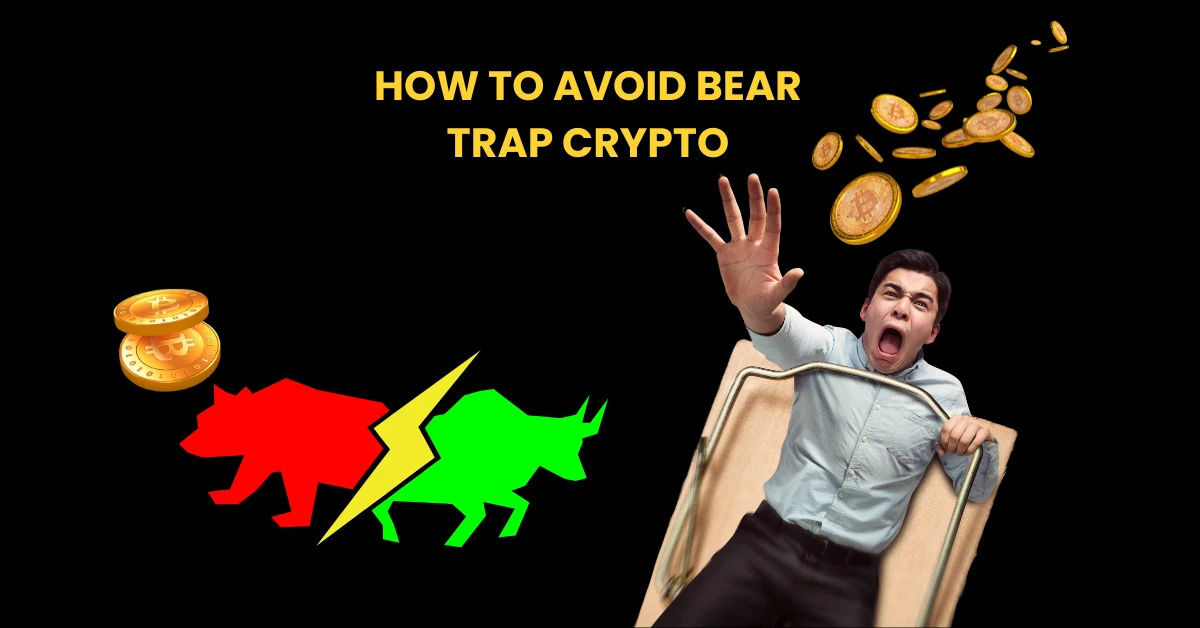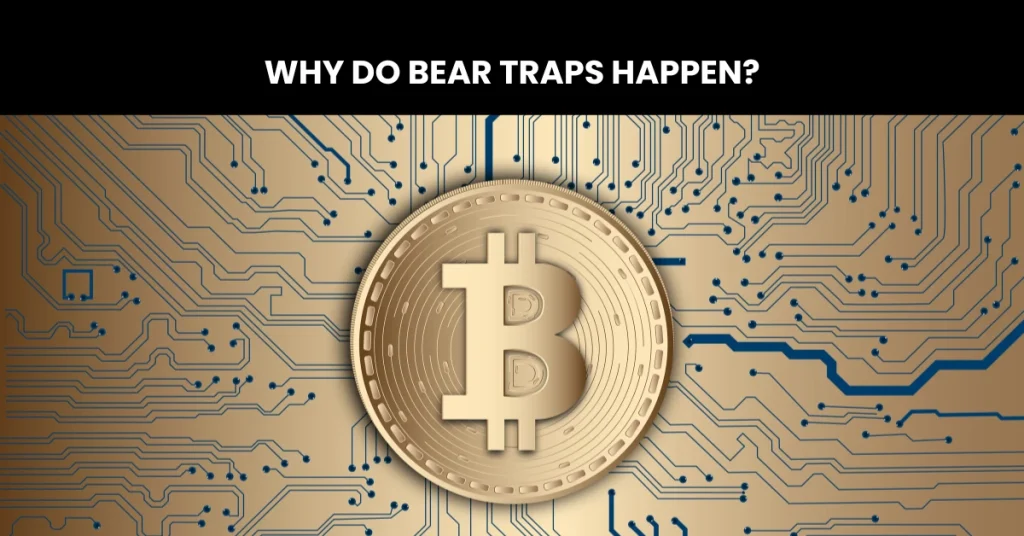How To Avoid Bear Trap Crypto

Sometimes when crypto prices drop fast, traders see it as a chance to make money by betting the price will fall even more. They use tools like put options or short trades to try and profit from this downward move. But here’s the thing — not every big dip means the price will keep going down. Sometimes, it is just a bear-trap crypto move.
A bear trap is a fake-out. It tricks traders into thinking a downtrend is starting, but then the price suddenly goes back up. Traders who bet on the price falling get caught and lose money.
If you are stuck in a bear trap crypto while shorting Bitcoin, you could get “trampled” as the price surges the other way. That’s why bear trap crypto can be super risky for bearish (downward) traders. In this article, we will tell you the possibilities of bear traps happening and how to avoid bear trap crypto.
What Is a Bear Trap in Crypto?
A bear trap crypto is a trick the market plays. It makes people think the price will go down a lot, but then it suddenly bounces back up. People who fall for this trap often sell too early or too short Bitcoin and end up losing money.
Bear trap crypto can show up on any kind of chart—whether you are looking at a short one-minute chart or a longer monthly chart. These traps can happen anytime, anywhere.
Why Do Bear Traps Happen?

Bear trap crypto events are often caused by big traders (sometimes called whales) who have a lot of money and power in the market. Here’s why bear-trap crypto scenarios happen. Understanding how market dynamics work can be easier if you’re familiar with basic behavioral finance, which explores how psychology impacts investor decisions.
Important Price Levels
Some price levels are psychological—like round numbers (e.g. $30,000 or $50,000). Lots of people pay attention to these levels. So, big traders try to manipulate the market when the price is near one of these spots.
- Strong Trends
If the market is moving fast in one direction (either up or down), it is easier for a trap to happen. When the price nears a key level in a fast-moving market, people panic or rush in, and that’s when the bear trap crypto setup is created. - Time
If a price level has not been touched in a long time, more people watch it. When the market goes back to that level, it catches a lot of attention—and that’s when bear trap crypto can strike.
How Does a Bear Trap Work?
Imagine the price of Bitcoin drops below a key level. People think, “Oh no, it’s crashing!”
So, they sell their Bitcoin or open short positions (bets that the price will go lower).
Then, something unexpected happens. The price jumps back up fast. All those people who bet against the market are stuck. They either:
- Lose money,
- Get forced to close their trades (called liquidation),
- Or hold losing positions, hoping it goes back down.
Meanwhile, the big traders (the ones who helped push the price down in the first place) buy up Bitcoin at low prices. Then they ride the bounce back up and make a profit.
This trick is how a bear trap crypto scenario hurts regular traders and helps the whales.
What Do Crypto Traders Do During a Bear Trap?

Trading during a sudden price drop isn’t easy. It is even harder if you don’t know how to manage your risk. But here are a few things traders usually do:
- HODLing
Some long-term traders don’t panic. They keep holding their crypto (this is called HODLing) and wait for the price to go back up. Some even buy more coins when prices are low to reduce their average cost. - Buying the Dip
Other traders — called contrarian traders — do the opposite of what most people are doing. When prices fall fast, they open long positions (buy more), thinking it is just a short-term dip and the price will bounce back after a bear trap crypto event. - Using Derivatives
Some experienced traders use derivatives like:
- Short perpetual contracts
- Futures
- Put options
These tools help them make money if prices go down. They also use these to protect (hedge) their long-term crypto investments.
- High-Risk Moves
A few traders try riskier moves like short selling or selling call options to bet against crypto prices. But this is very risky. If it’s a bear trap crypto and the price goes back up, they could lose a lot of money.
Market Spoofing: The Hidden Trick
In crypto, bear-trap crypto moves are often caused by something called spoofing. This is when big traders pretend to buy or sell a huge amount of Bitcoin. They move the price in a certain direction on purpose.
Once the price gets close to where they want it, they remove those fake orders and take the opposite position. This isn’t allowed in regular stock markets, but it still happens a lot in crypto.
How to Spot a Bear Trap
It’s not always easy, but here are some tips to help you avoid getting caught in a bear trap crypto setup:
- Watch the Volume
If the price drops below an important level and the volume jumps, it might mean lots of people are shorting. That could be a bear trap crypto setup. - Look for Added Liquidity
If a lot of buy or sell orders suddenly show up right near the key price level, be careful. It could be fake interest meant to trick the market and create a bear-trap crypto scenario. - Pay Attention to Whales
The big players often wait for the perfect time to buy. When they see lots of people shorting, they step in and buy hard, making the price bounce quickly. That leaves small traders stuck in a bear trap crypto event.
What’s the Difference Between a Bear Trap and a Bull Trap?

A bear trap crypto tricks traders into thinking prices are going to fall more, so they sell or short the asset. But then the price quickly goes back up.
A bull trap does the opposite. It happens when people think the price will go higher, so they rush to buy. But instead of going up, the price suddenly drops.
Just like bear traps, bull traps use emotions and psychology to trick traders. Bull traps usually show up at the end of a price rise, when prices hit new highs. That’s when big traders sell while everyone else is still buying.
Peak buyers usually have to wait several years for prices to revert. For example, when Bitcoin first broke $69,000 in November 2021, it took more than two years before seeing the price again approach that level in March 2024.
How to Avoid a Bear Trap
Avoiding a bear trap crypto scenario takes a little research and a lot of patience. Here’s how you can stay safe:
- Know the Key Price Levels
Some prices are really important in traders’ minds—these are called psychological levels. Look at charts to find places where prices often bounce or stop. These are spots where bear trap crypto events usually happen. - Use Tools Like Support and Resistance
These tools help you see where prices might stop falling or rising. If you know these levels, you will be able to spot fake breakouts or possible bear-trap crypto setups more easily. - Learn from the Past
Reference Bitcoin, Ethereum, or some other coin’s price history. This tells you about how prices acted in the past when they hit certain levels, often where bear trap crypto events took place. - Do Not Trade on Emotion
When the market starts to move rapidly, stay cool-headed. While everyone is charging in and you consider joining them, you might be walking right into a bear-trap crypto scenario. Breathe, think, and don’t charge blindly with the crowd.
Conclusion
Bear trap crypto events are common in crypto, especially around key price levels where people feel nervous or excited. Big players often use these emotional moments to trick small traders into selling or shorting at the wrong time.
These traps work because of market psychology. When people panic and sell, whales and smart traders step in to buy low, then prices bounce back, and the trap is complete.
Read More:
FAQs
What is a bear trap?
A bear trap is when traders think the price will keep falling, so they short or sell. But instead, the price jumps back up fast, and those traders get stuck in losing trades.
What is a bear trap in crypto?
In crypto, bear trap crypto events happen a lot, especially with volatile coins like meme tokens. Sometimes, big traders trick the market using something called spoofing. This is when they pretend to buy or sell a lot to move the price and then quickly cancel the orders.
Is a bear trap a bullish sign?
Yes, it can be. Bear trap crypto setups often show up during a pause in an uptrend. The trap scares weak traders out of the market. Once that’s done, prices usually go back up, so it can mean a bullish move is coming.










